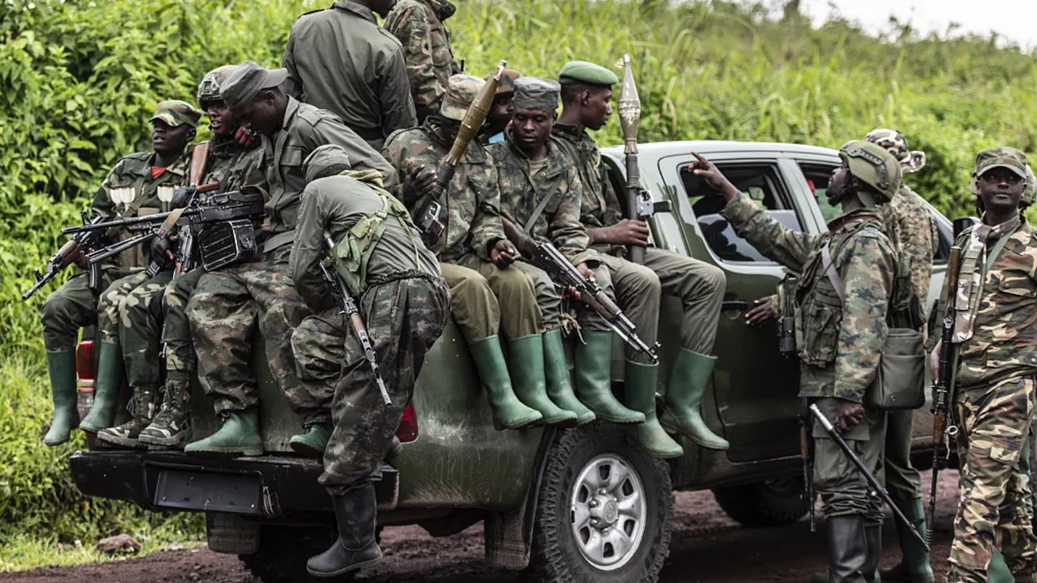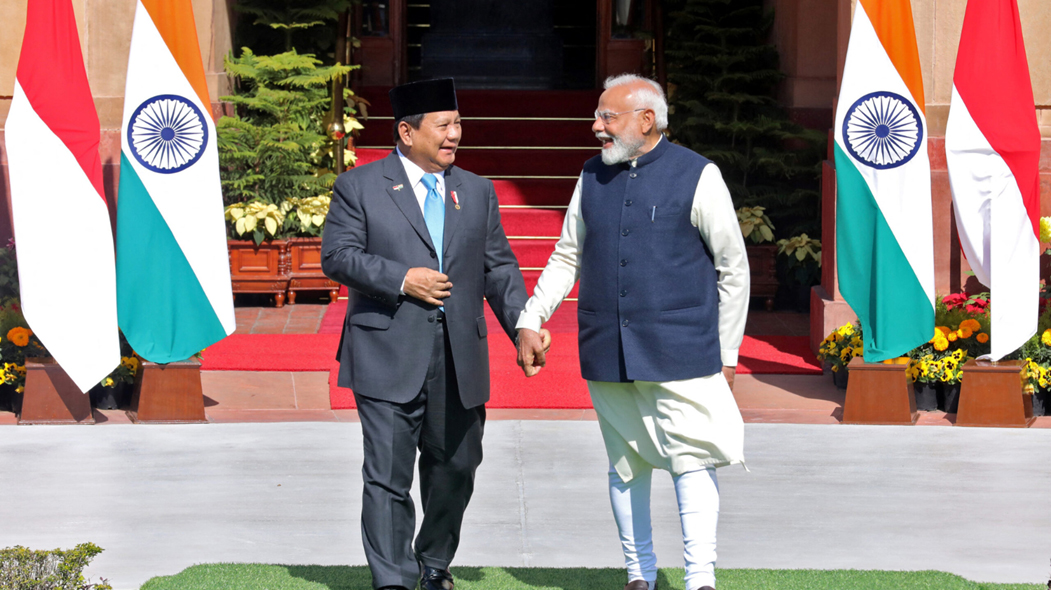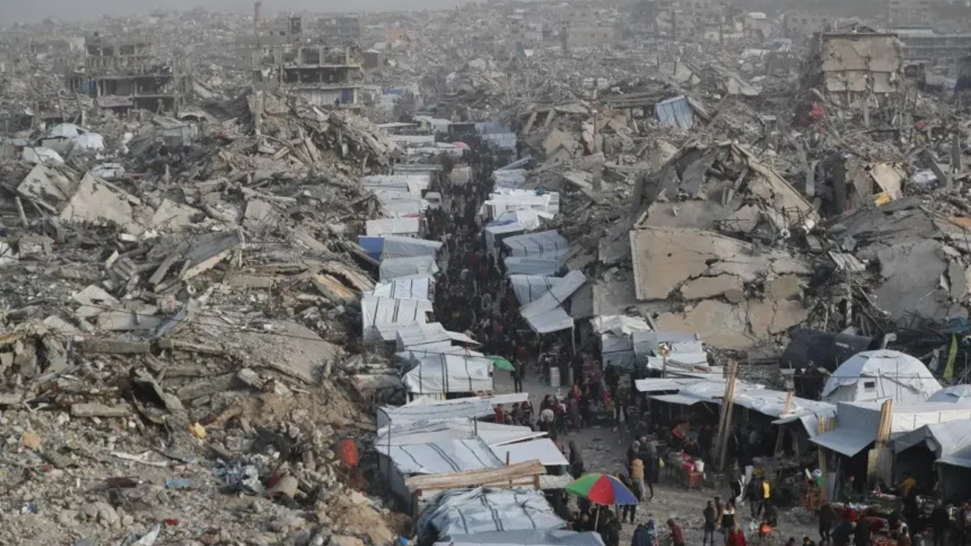“Terrorism is the most significant threat to peace, security, and sustainable development across the African continent today,” stated Amina J. Mohammed, Deputy Secretary-General of the United Nations.
Africa remains a hotspot for armed conflicts, terrorism, and civil unrest, with multiple ongoing non- international armed conflicts (NIACs) across multiple nations. Countries like Mali, Burkina Faso, Somalia, and Nigeria face relentless insurgencies from groups such as IS affiliates and al-Qaeda-linked militants, exploiting weak governance and local grievances. Military coups, as seen in Mali, Chad, and Niger, further erode democratic structures, compounding instability. External interventions by Western and neighboring powers have had mixed success. Africa’s prominence in the Global Terrorism Index reflects the surge in extremist violence, making the continent a focal point in global security and counterterrorism efforts. This article will justify how the Sahel region is rightly termed a “zero ground”, as it has become the epicenter of one of the world’s most violent crises. Over the past several years, terrorism-related deaths have exceeded 6,000, accounting for more than half of global fatalities.
1. THE DEMOCRATIC REPUBLIC OF THE CONGO
The Democratic Republic of the Congo (DRC) is once again engulfed in a brutal escalation of conflict, with the M23 rebel group making rapid territorial gains in the east. Since December, hostilities have spread from Lubero in North Kivu to Masisi and further south to Minova and Numbi in South Kivu, displacing hundreds of thousands of people. The most alarming development has been the rebels’ advance toward Goma, the provincial capital of North Kivu, triggering panic as artillery explosions echo throughout the city. Fighting has now intensified on all access roads to Goma, forcing civilians to flee. The humanitarian situation is catastrophic—more than 400,000 people have been displaced since January alone, and the already overwhelmed camps near Goma, home to 650,000, are now receiving a fresh influx of exhausted and starving refugees. These displacement sites are woefully unhygienic and lack necessities such as food, water, and medical care, with rockets even landing near shelters and hospitals. The crisis is worsening with every passing day as M23 continues its offensive.
The rebels, widely believed to be backed by Rwanda, have taken control of key areas around Goma, with reports suggesting they have seized much of the city itself. The international response has been slow, prompting DRC President Felix Tshisekedi to denounce the “silence and inaction” of the global community, warning of the potential for further escalation in the Great Lakes region. While Kenya attempted to convene a crisis summit between Tshisekedi and Rwandan President Paul Kagame, the DRC leader refused to participate, instead vowing a vigorous military response. Meanwhile, regional players such as South Africa and Angola have condemned Rwanda’s involvement, and the United Nations has issued warnings about the humanitarian catastrophe unfolding in eastern DRC. With M23 fighters reportedly moving towards Bukavu in South Kivu and potentially threatening the national capital, Kinshasa, fears are mounting of an even broader and bloodier conflict.
The roots of this turmoil stretch back decades. The eastern DRC has been a battleground for various armed groups since the Rwandan Genocide of 1994, which saw a spillover of ethnic tensions and armed factions into Congolese territory. M23 itself emerged in 2012, comprising largely ethnic Tutsi defectors
from the Congolese army who claimed the government had reneged on peace agreements. The rebels briefly captured Goma that year before international pressure forced their withdrawal. However, they resurfaced in 2021, launching a renewed campaign against the Congolese state. The region’s immense mineral wealth—vital for global industries—has fueled cycles of conflict, with Rwanda consistently accused of supporting M23 to secure access to these resources. Despite multiple peace efforts, including recent summits and diplomatic interventions, lasting stability remains elusive. The current escalation underscores the deep-seated volatility of the region, raising the specter of a wider war that could entangle neighboring states and push the DRC further into chaos.
2. SUDAN
Sudan is experiencing an unprecedented humanitarian catastrophe as the civil war between the Sudanese Armed Forces (SAF) and the Rapid Support Forces (RSF) enters its third year. The conflict, which erupted in April 2023, has left over 30 million people in urgent need of aid, making it the largest displacement and humanitarian crisis globally. Violence continues to devastate civilians, with widespread sexual violence, ethnic cleansing in Darfur, and attacks on infrastructure. Humanitarian access is severely restricted as aid workers face targeted attacks, and famine is gripping communities, particularly in displacement camps like Zamzam. Cholera and malnutrition have surged due to the collapse of Sudan’s healthcare system, which has seen over 119 verified attacks on medical facilities. With neighboring countries like Chad and South Sudan overwhelmed by an influx of 3 million refugees, international actors are struggling to provide adequate assistance. The UN has repeatedly warned of an impending mass starvation event, while mediation efforts, including those by the US, Saudi Arabia, and Libya, have failed as both warring factions refuse to negotiate a ceasefire.
The roots of Sudan’s crisis lie in its complex post-colonial history and decades of military rule, including the oppressive 30-year dictatorship of Omar al-Bashir. The power struggle between SAF leader General Abdel Fattah al-Burhan and RSF commander Mohamed Hamdan “Hemedti” Dagalo emerged following the 2019 revolution that ousted Bashir, as both forces vied for dominance in Sudan’s transitional government. International actors, including Iran and the UAE, have fueled the war by supplying weapons, deepening regional instability. Ethnic violence in Darfur echoes the genocide of the early 2000s, with recent massacres of the Masalit people raising alarm. Sudan is at risk of total collapse, with the UN and humanitarian organizations warning that time is running out to prevent further mass deaths. Meanwhile, Western nations fear that the growing instability will push refugees toward Europe, increasing geopolitical tensions. Without an immediate ceasefire and a renewed push for peace talks, Sudan faces prolonged destruction with catastrophic regional and global implications.
3. ETHIOPIA
Ethiopia remains embroiled in internal conflict despite the formal end of the Tigray War in November 2022. The war, which began in 2020, saw the Ethiopian government, backed by Eritrean and Amhara
forces launch an offensive against the Tigray People’s Liberation Front (TPLF). With a communications blackout, Tigray suffered mass killings, ethnic cleansing, and a humanitarian blockade, leading to an estimated 600,000 deaths. Though the Pretoria Agreement halted large-scale combat, the Ethiopian government’s push to consolidate military control by dismantling regional security forces sparked fresh conflicts in Amhara and Oromia. In 2023, Amhara’s Fano militia resisted disbandment, leading to clashes with federal forces. Meanwhile, in Oromia, peace talks with the Oromo Liberation Army (OLA) collapsed for the third time in November, prolonging ethnic violence. Ethiopia’s instability has wider geopolitical implications, affecting its border dispute with Sudan and tensions with Egypt over the Grand Ethiopian Renaissance Dam.
The government’s efforts to centralize power have exacerbated internal divisions, with Amhara militias now turning against the state they once supported. Oromia remains volatile, with continued attacks on Amhara enclaves and federal troops unable to quell insurgencies. The humanitarian situation remains dire, as displaced Tigrayans await the promised return to their lands amid reports of continued Eritrean and Amhara occupation. Ethiopia has become a battleground for ethnic cleansing, driven by deep- seated historical rivalries and the government’s attempts to consolidate power. The Tigray War saw mass atrocities, including ethnic-based massacres, sexual violence, and forced starvation. Even after the conflict’s formal end, Amhara and Oromia have witnessed targeted killings, displacements, and arbitrary arrests. The federal government’s crackdown on regional forces has further inflamed tensions, leading to cycles of revenge attacks. Ethiopia’s fragmentation has enabled widespread ethnic persecution, turning the country into a site of systemic cleansing. Despite attempts at diplomacy, Ethiopia remains fractured along ethnic lines, and escalating tensions threaten renewed civil war.
4. NIGERIA
Following Bola Ahmed Tinubu’s election in 2023, Nigeria has faced worsening economic and security crises. Inflation reached 34.19% by mid-2024, with food inflation exceeding 40%, worsening poverty levels. Government crackdowns on dissent have led to arrests of journalists and activists. Armed groups continue to terrorize the Northwest and Northcentral regions, with banditry-related kidnappings surging, notably the abduction of 287 schoolchildren in Kaduna in March 2024. Ethno-religious tensions persist, with herder-farmer conflicts causing mass killings, particularly in Plateau State. Over 1.3 million people have been displaced in the Northcentral and Northwest regions, with rising humanitarian needs and limited healthcare access.
The Boko Haram insurgency continues in the Northeast, with fresh attacks killing at least 170 people in Yobe in September 2024. A new group, Lakurawa, has emerged in the Northwest, complicating security efforts, while strained Nigeria-Niger relations post-coup have weakened military cooperation. Economic hardships persist due to subsidy removals, currency devaluation, and poor government support.
5. BURKINA FASO
Burkina Faso’s security crisis has worsened dramatically, with widespread armed violence causing mass displacement and making it the most terrorism-affected country globally. The conflict, which has spread across all regions, has resulted in Burkina Faso ranking first in the Global Terrorism Index, with non-state armed groups seizing control of nearly a third of the country. Burkina Faso’s crisis has deep historical roots, with its current instability stemming from a combination of political turmoil, regional spillover conflicts, and the rise of militant groups. After gaining independence from France in 1960, the country experienced decades of military rule, followed by a period of relative stability under Blaise Compaoré, who ruled from 1987 to 2014. However, his ousting in a popular uprising in 2014 led to a fragile transition, during which jihadist groups began exploiting the power vacuum. The security situation worsened as conflicts from neighboring Mali spread into Burkina Faso, with militant attacks reaching the capital, Ouagadougou, by 2016. By 2018, violence had intensified, with jihadist groups such as al- Qaeda-affiliated JNIM and the Islamic State Sahel Province (ISSP) gaining footholds across the country. Since then, Burkina Faso has suffered from relentless conflict, with two coups in 2022 exacerbating instability. By early 2024, over 2 million people were internally displaced, and humanitarian access remained severely restricted due to attacks, blockades, and government-imposed movement restrictions. More than 6.3 million people require aid, with 3.8 million facing food insecurity. The closure of 5,700 schools and 426 health facilities by mid-2024 further highlights the devastating impact of violence, leaving millions without access to essential services.
JNIM, an al-Qaeda affiliate, continues targeting security forces, using explosives and raids. January 2025 saw deadly confrontations, including an ambush killing six soldiers and another attack on auxiliaries that left 14 dead. The Islamic State Sahel Province (ISSP) has also escalated attacks, notably killing 18 security personnel in a convoy assault. With rising violence, economic collapse, and extreme hunger, Burkina Faso faces an unprecedented humanitarian catastrophe while government-imposed restrictions and militant blockades have worsened hunger and humanitarian access
6. SOMALIA
Somalia remains mired in a multi-faceted crisis fueled by persistent armed conflict, political instability, and climate-induced disasters. The conflict with Al-Shabaab, an al-Qaeda affiliate, continues to dominate the security landscape, with the militant group carrying out frequent bombings, targeted assassinations, and large-scale attacks, especially in Mogadishu and the southern regions. In early 2025, clashes between Somali security forces and Islamic State fighters in Puntland led to nearly 70 deaths, highlighting the sustained threat from extremist groups. Despite government offensives reclaiming territory, Al-Shabaab retains strongholds and extorts millions in revenue. The Somali National Army remains fractured along clan lines, weakening its ability to stabilize the country. The fragile political climate worsened with former President Farmajo’s attempts to extend his term, leading to violent
unrest and mass displacement in Mogadishu. While efforts to hold elections and unify the government continue, deep divisions persist between the federal government and regional states, complicating governance and security efforts.
Beyond conflict, Somalia faces a severe humanitarian crisis exacerbated by climate change and external economic shocks. The country has suffered recurrent droughts, severe flooding, and failed harvests, leaving millions food insecure. The recent Horn of Africa drought, coupled with inflation from disrupted grain imports due to the Ukraine war, has driven food prices beyond many Somalis’ reach. The December 2023 floods were the worst in a century, further displacing communities. With more than 4 million internally displaced people and urban centers overwhelmed, the country struggles to recover from overlapping crises, making long-term stability and resilience-building efforts crucial.
7. MALI
Mali’s security situation continues to deteriorate, with the latest attack in early February 2025 underscoring the persistent threat posed by terrorist groups. A convoy transporting gold miners under military escort was ambushed near Gao, resulting in 25 civilian deaths and 14 injuries. In retaliation, Malian forces killed 19 militants. While no group has claimed responsibility, ISIS-affiliated fighters and the al-Qaeda-linked Jama’at Nusrat al-Islam wal-Muslimin (JNIM) have historically operated in the region. Such attacks highlight the failure of military escorts to fully protect civilians. The instability, rooted in the 2012 coup and subsequent northern occupation by armed groups, has persisted despite multiple transitions of power, with Colonel Assimi Goita currently leading the transitional government. Attempts at peace, such as the 2024 inter-Malian dialogue, have yet to yield tangible security improvements, while terrorist groups remain highly active across the Sahel.
Beyond conflict, Mali faces deepening humanitarian and economic crises. By 2025, 6.4 million people— 28% of the population—require humanitarian aid, particularly in conflict-ridden northern and central regions. Climate change-induced droughts and flooding have worsened food insecurity and displacement. The economy remains fragile, with extreme poverty rising due to insecurity, inflation, and sluggish growth. Despite UN-led humanitarian efforts reaching 1.8 million people in 2024, funding shortfalls hinder effective response. Looking ahead, Mali’s political transition remains uncertain, with unresolved governance challenges, persistent terrorist threats, and worsening humanitarian conditions creating a volatile and fragile landscape.
8. THE CENTRAL AFRICAN REPUBLIC
The Central African Republic (CAR) remains in turmoil, with ongoing conflict, displacement, and humanitarian crises worsening in 2025. Since 2012, sectarian violence between the predominantly Muslim Seleka rebels and Christian Anti-balaka militias has fueled instability. While initial peace
agreements and transitional governments attempted to restore order, violence resurged after the contested 2020 elections, displacing over 200,000 people. Armed clashes, inter-communal violence, and natural disasters have contributed to rising displacement, with projections estimating over 550,000 internally Boko displaced persons (IDPs) by the end of 2025. Humanitarian needs remain critical, with
3.1 million people requiring aid, yet funding shortfalls hinder effective responses.
CAR’s long-standing political instability, compounded by weak governance and external interference, has left it one of the least developed nations globally. Despite the UNHCR facilitating returns for displaced individuals, over 670,000 refugees remain in asylum countries. Gender-based violence remains a significant human rights issue, with thousands of women and girls affected. As insecurity and climate change worsen conditions, international assistance remains crucial, yet protection programs remain underfunded. While efforts are made to rebuild stability, CAR’s deeply rooted sectarian divisions and economic hardships continue to challenge its recovery.




